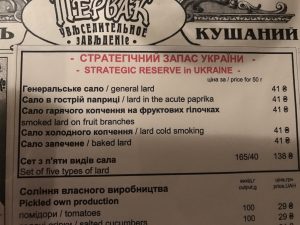
Let me get this out of the way upfront. I didn’t even spend long enough in Kiev and I want to go back before it’s too late. My time in the city was all too brief and all too enjoyable, among people who are putting on a brave face over deep insecurity and fear. Get in the habit of saying “Ukraine”, not “the Ukraine”. The latter version implies that they are just a region rather than a country, which is very much how Russia regards them. Also, my pierogi lust has no end. I already knew this, but Kiev catered to it.
As a reminder, I left San Francisco the day after the presidential election and arrived in Kiev a day after that. As the only American I met until I got to Chernobyl (even my compatriot was Canadian), the conversations I had with Ukrainians who spoke at least some English generally went like this:
- You’re American?
- Did you vote for Trump?
- How did ANYONE vote for Trump?
- What happens next?
Because I’m me with funny answers to questions and a decent knowledge of recent events, Ukranian companions were happy to offer PROTIPS. And I quote from the woman running the front desk at 3am and I had terrible instant coffee with because I couldn’t sleep, “You can get rid of Putin’s puppets. If you paid attention, we showed you how. Just…don’t wait until winter. Maidan was cold.” The assumption from the Ukrainian point of view is that within a year or so, they won’t have an independent country anymore. That with Trump in office there isn’t an America to act as backstop for NATO (read: the Europeans won’t actually do something without America jabbing them in the back with a stick) if Russia decides to “assert territorial rights”. I can’t fault this fear for a second, since they have recent events in Crimea and Donetsk to point to. Some parts of the city haven’t quite recovered from the Orange Revolution, much less Euromaidan, but they put up a nice facade, literally. The empty or damaged buildings around Andriyivskyy Descent have been covered with cloth that have pictures printed/painted on them showing what the buildings looked like when they were occupied or new.
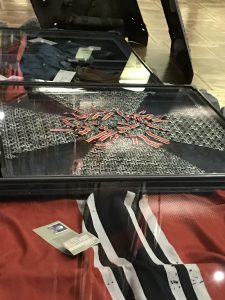
Which is part of why I decided to devote what meager Kiev tourist time I had not to staggeringly gorgeous Eastern Orthodox churches, not to the treasures and art that date back to when the the Kievan Rus were Vikings that had neat found a way to trade with/raid Constantinople, not to the many sex clubs that Kiev is quite certain western tourists want…no, I went to the Motherland Memorial, the Rodina Mat, and the Museum of the Great Patriotic War that rests beneath her feet. To be fair, under de-Sovietification it was renamed the Museum of the History of Ukraine in the Second World War which doesn’t quite pop the same way. I could see places where one or two exhibits had been removed or maybe an informational plaque had been changed, but generally it didn’t look like much had been altered from when the place was dedicated in 1981. Based on the exhibits inside, I think it would be entirely fair to call it the Ukrainian Museum of Art Made with Stuff We Took from Dead Nazis Because We Killed A LOT of Them.
And so I set out into Kiev as the snow started coming down. Normally, I would have happily walked across the city from our hotel to the Rodina Mat. That was not a normal day, which is why I summoned my first Uber* ever.
I also have to give the sad report that a lie told enough times becoming accepted fact got proven for me with the driver who was impressed that we had elected Obama, a Kenyan, as president of the US. On a positive note, he didn’t think it was bad that America had elected a non-citizen as president, just odd. We corrected him and also pointed out that Hawaii is one of the states of the United States of America, even if the islands are far away from the continent. The Birther Movement lie is alive and well overseas but with less information about how America is supposed to work, garbling the disinformation campaign. I want to give my driver full honors and accolades for braving the first major snowstorm of the year, driving on slick cobblestone streets, among the other drivers who appeared determined to die. It was a beautiful moment where one remembers humans are the same everywhere: for the first major storm of the year, rain or snow, everyone forgets how to drive in it and hilarity ensues. Doesn’t matter if its San Francisco, Denver, Sydney or Kiev, just listen for the sounds of brakes, squealing tires and crunching fenders.
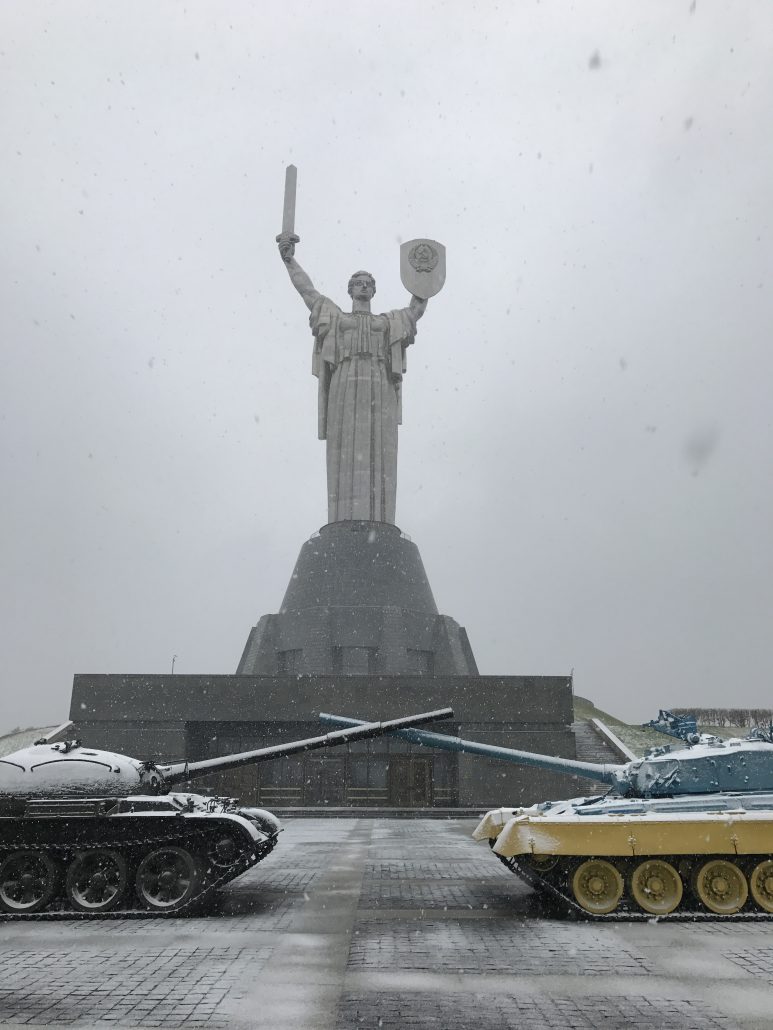
For the benefit of folks who don’t know what the Great Patriotic War was, why it deserves a museum, and why the heck does Kiev has this giant statue, here’s a quick review. The Great Patriotic War was the USSR’s term for WWII because, relative to the Soviet Republics, this was a war fought on their soil for their very survival. WWI, for which most of Europe still uses the old term “The Great War” with the assumption there wouldn’t be another war ever, wasn’t something the Soviet authorities were terribly proud of. It was the war that belonged to the Tsar and the Bolshevik Revolution happened at least in part to get the hell out of said war, and to then promptly begin the civil war for control of the former Russian Empire which also wasn’t something to be particularly proud of. Relative to the start of the Soviet Union, this was the big one, the GLORIOUS MOMENT FOR GLORIOUS STATE, and hence the name Great Patriotic War. That demands museums, monuments, and parades to put America to shame; we merely had the Greatest Generation in WWII, they have the Hero Generation of the Great Patriotic War.
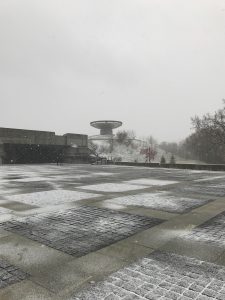
For the cities that fought the longest, that had the roughest battles, the Politburo had a special designation: Hero City. While the casualties were higher and battle of longer duration in Leningrad and Stalingrad, Kiev had the “pleasure” of being a major battlefield against the Nazis twice and a long, lethal Nazi occupation. This monument and museum were part of a larger patriotic park to tell the story of the Battles of Kiev in sculpture and architecture. In a subtle manner, it tells newer stories too; the Flame of Glory, which is a giant Olympic Games-like cauldron that was meant to be an eternal burning flame of memory, is now only lit for major events like Victory Day because natural gas supplies from Russia aren’t to be counted on.
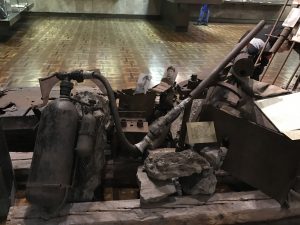
Other than the docents who worked there, I more or less had the park and the museum to myself other than the British dad who seemed just a little bit too excited about all the Nazi gear on display to show his son. I was offered an English audio tour of the museum but declined it. I wanted to see how much of the story I could figure out with the limited postings in English, my almost non-existent skill at reading the Cyrillic alphabet, and my compendious knowledge of the horrors of war.
In light of the recent Holocaust Remembrance Day and how badly our administration flubbed it, I want to share with you that the Great Patriotic War Museum very much remembers with a point of view that is powerful. You’ve been repeatedly told “6 million people were systematically murdered by the Nazis” your whole life, the Ukrainians add this addendum: “…and a 1.5 million of that number was from here.” Remember the term “Final Solution” which came out of the Wannsee Conference in 1942? This was a response to the Nazi death squads wandering around the recently conquered Ukraine in Operation Barbarossa, putting hands on hips, shaking their heads and saying “There’s gotta be a better way” after perpetrating horrors like Babyn Yar. It is hard for Kiev to forget things like Babyn Yar since it happened in a ravine in the northern part of the city, rather than just far enough away from a town for things to be out of sight, out of mind like most of the concentration camps. This also made it really easy for Soviet authorities to go collect artifacts from the killing grounds and the Nazi attempt to hide the evidence of it.
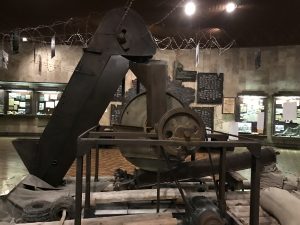
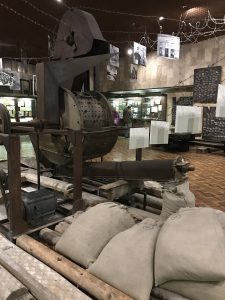
And, oh that evidence. In this museum, you had to ask if you could do photography first but it was permitted. Every other Holocaust exhibit I have ever been to around the world has strictly forbidden photography. In the Holocaust Room at the Great Patriotic War Museum, I was encouraged to take pictures, of the things even *I* was uneasy with. To remember. To remember the bone grinder used in Babyn Yar to mulch the bodies victims into fertilizer and the Nazi eagle stamped sacks the bone meal went into. To remember the soap made from rendered human fat. To remember and take a REAL CLOSE LOOK at the human skin driving gloves for the commandant’s wife. To remember that all of these “consumer products” were once Ukrainians. That they will never let this happen again because they can’t afford it, the loss was too cruel and dire. I’ve shared the pictures of the bone mill but I can’t quite bring myself to put the human-based products up.
The small exhibit that got my attention after the Holocaust Room was the one dedicated to the Hero Mothers. Nazi Germany gave medals to the women who had six our more good, racially fit Aryan children for the Reich. The Soviet Union gave medals to the women who had five our more children die in service trying to defend the country from invasion, as opposed to those whose families had been lost to wholesale slaughter. The museum put some of them with their pictures up on display. I’m sure a medal next to her face wasn’t quite enough for the lady with the pictures of nine sons below her, each of them with a red line across his face, crossed with a bullet casing.
But all that is the past Kiev is trying to move on from, to find prosperity and, honestly, the place looks pretty good all things considered. The repeated efforts by Russia, and Ukraine’s own problematic oligarchs, to stifle their modernization are frustrating but haven’t stopped the process, just slowed it down. I’m to understand some of the smaller places away from the capital still have some timewarp/neglect issues, but I can’t speak to what I didn’t really see, other than on the drive to Chernobyl. Having done my fair share of traveling, no city has quite sunk it’s claws into my heart as fast as Kiev did, which is why I also picked up their fear. All the precarious hope for the future, teetering on an uncertain war in the east and a West that wants to ignore what’s going on. This is why I want to go back again, because one day and change wasn’t remotely enough time. I encourage everyone to give Kiev a go while it’s still a free and independent Ukraine. If that dark day comes when they aren’t anymore, I don’t expect them to give up without a fight. I expect nothing less from a Hero City, but I also know it would’ve happened because Putin got a tacit green light from America. I can’t express how disgusted I am by the very thought.
And as long as you don’t travel on the weekends, the roundtrip flights remain surprisingly cheap. After all, that was the first condition I had to fulfill when this trip started back in Part 1. So go, before you can’t anymore.
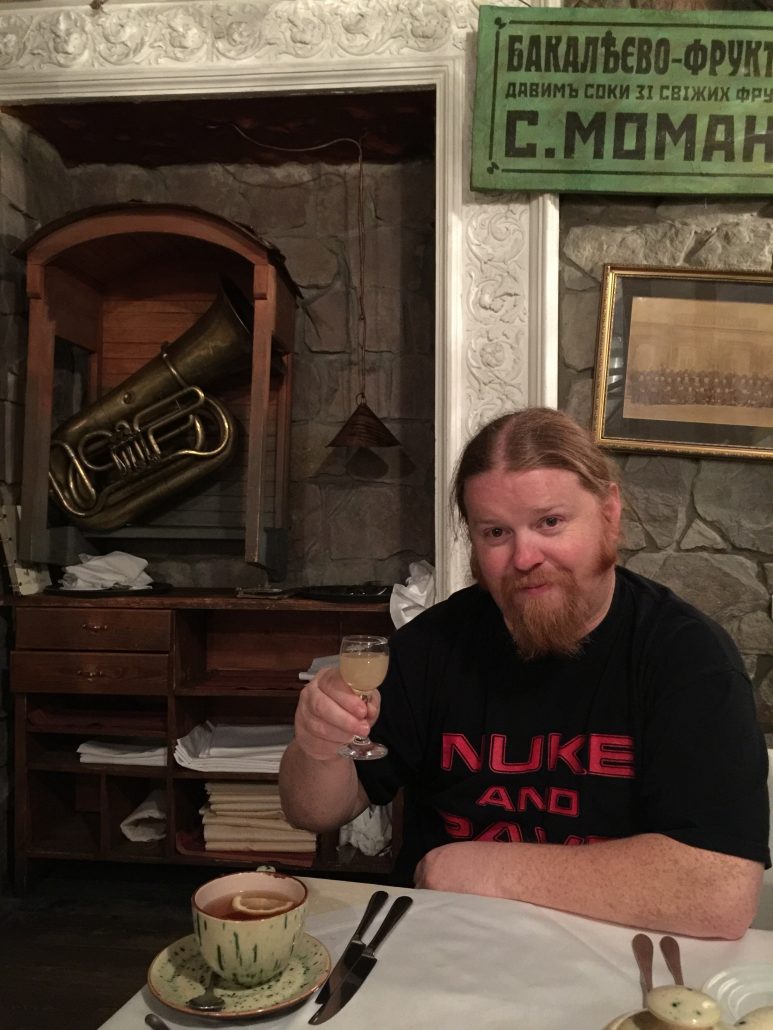
*: Okay, now for the part where I swear I am not sponsored by Uber. Prior to visiting Ukraine, I had never had the Uber app before and only ever rode in Uber vehicles as a passenger. In light of the many people who had warned me about the “mid-trip fare renegotiation” of cabs in Eastern Europe, but particularly Kiev, I decided an alternative was a good idea, just in case. It’d be expensive I reckoned, but always good to have contingency, right? Right. So, let me set the scene.
I had just left the Great Patriotic War Museum. The snow, which was respectable when I’d gone in several hours earlier, had picked up by the time I exited. I slogged through the completely empty park, past the patriotic statuary and frozen friezes, and up the steps to the road to get out to the main streets. Normally, I would be happy take the several mile walk across a new city just for the chance to soak it and have great times in places where people later tell me I certainly should have died (i.e. wandering into communist neighborhoods in Rome). Unfortunately, my nice windstopper fleece & gloves were getting increasingly useless against the accumulating snow, which was melting and wicking through. And so, standing outside Cafe Kupol, a converted sacristy to restaurant, I took off my glove, pulled out my phone, mumbled “Fuck it” to myself, and turned on international roaming so I could summon an Uber to get me back to my hotel. My after action report: